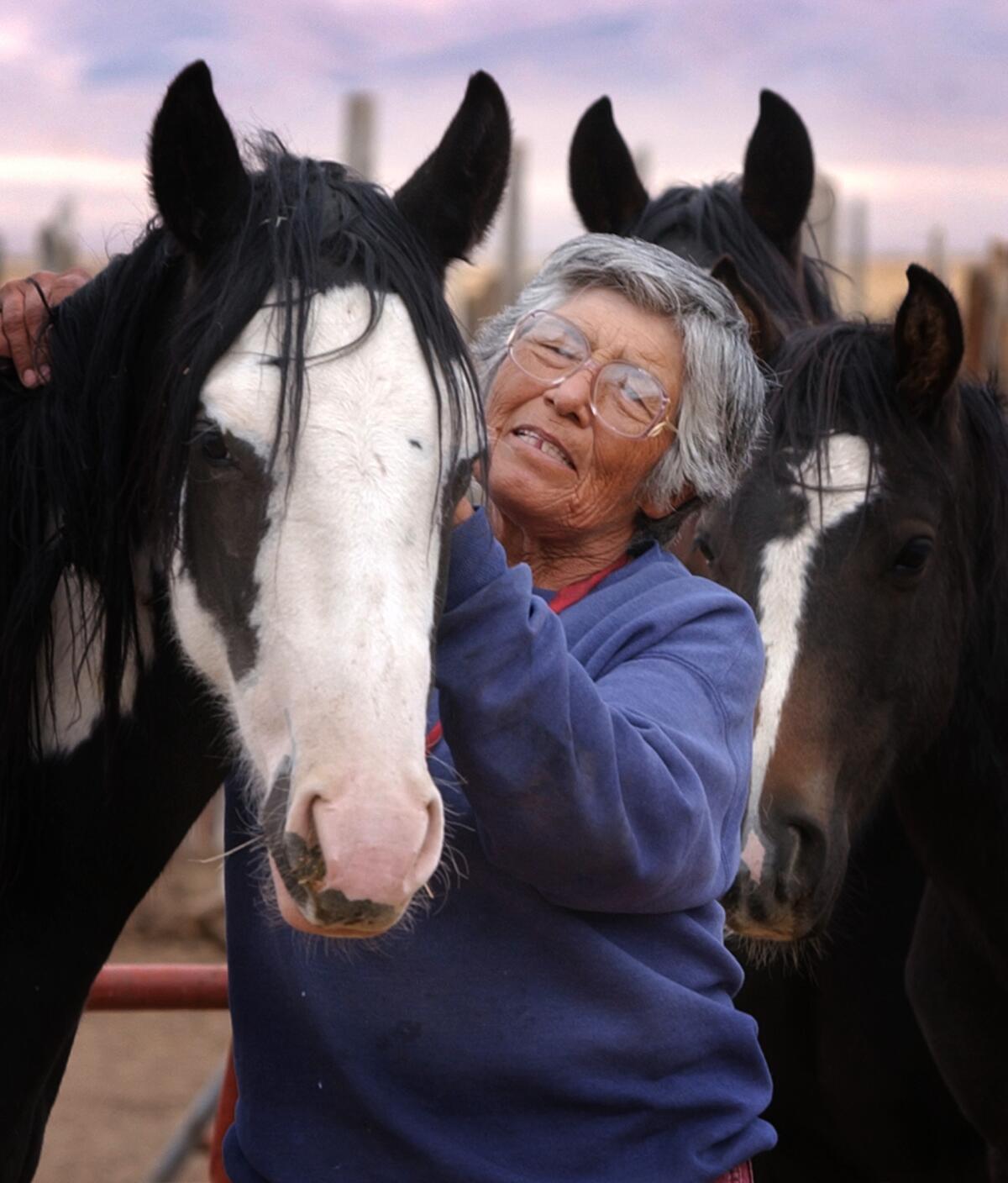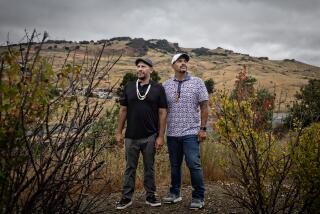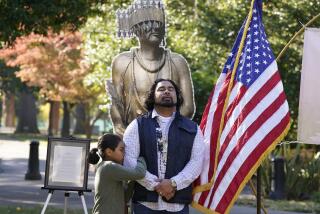Carrie Dann, Native American land activist who blocked mining project, dies

- Share via
Carrie Dann, a Native American land rights activist, Nevada rancher and longtime leader of the Western Shoshone Nation who fought the federal government for decades, has died.
Dann and her younger sister Mary Dann, who died in 2005, spent much of their adult lives trying to protect ownership of their ancestral lands in central Nevada.
Born in Nevada’s Crescent Valley in 1932, Carrie Dann co-founded the Western Shoshone Defense Project in 1991.
Dann died of natural causes Jan. 2 at her home outside Reno, said Julie Cavanaugh-Bill, a friend and lawyer in Elko who worked with Dann on numerous defense project cases. She was believed to be 88 but didn’t have a birth certificate, Cavanaugh-Bill said.
Carrie Dann helped lead efforts to block several northern Nevada mining projects and was a staunch opponent of shipping nuclear waste to the Yucca Mountain site in southern Nevada. She also sought relief for tribal residents affected by nuclear weapons testing.
She was among dozens of peace activists arrested along with actor Martin Sheen during a 2011 anti-nuclear protest at the Nevada Test Site north of Las Vegas.
Carrie and Mary Dann grew up on an 800-acre ranch once run by their father.
For more than a quarter-century, they were at the forefront of efforts to reclaim a vast tract of land spreading across four Western states. They claimed their aboriginal land under the 1863 Treaty of Ruby Valley was seized by the United States.
Under the treaty, the United States formally recognized Western Shoshone rights to about 60 million acres now covering parts of Nevada, Idaho, Utah and California.
The tribe sued the government for failure to honor the treaty, but courts ruled they were not entitled to compensation. The tribe appealed, and the Indian Claims Commission awarded it $26 million in 1979. But the tribe refused to accept the money in exchange for the land.
Eventually, the U.S. Supreme Court ruled in 1985 that the tribe lost title to the land when the $26 million was deposited earlier as payment — even though the money was never collected.
The Danns quit paying federal land grazing fees in protest during the 1970s. In 1974, the Bureau of Land Management sued them, claiming they were trespassing by letting their cattle graze on federal land without payment. In 2003, the federal agency seized hundreds of horses and cattle from the Danns.
More recently, Carrie Dann joined other tribal leaders and environmentalists fighting a number of mining projects, including Barrick Gold Corp.’s Cortez Hills project, an expansion at one of the biggest gold mines in North America next to a mountain the tribe considered sacred.
Carrie Dann said that Mt. Tenabo was home to several Western Shoshone creation stories and that the water running beneath it is a sacrament important to maintaining the balance and power of life.
“This area is where the seasons of the year were named — in the time before people were here,” she said in 2011.
The Nevada Museum of Art permanent collection in Reno includes artworks by Jack Malotte related to the Dann sisters and the Western Shoshone Sacred Lands Assn.
Ann M. Wolfe, the museum’s deputy director, said she has worked with contemporary visual artists such as Malotte and Jean LaMarr to make sure the Danns’ story is not forgotten.
“Carrie Dann and Mary Dann fought tirelessly to defend Indigenous land rights as outlined in the 1863 Treaty of Ruby Valley between the U.S. and Western Shoshone leaders,” Wolfe said in an email Tuesday to the Associated Press.
“The Danns’ story is essential to understanding the collision between indigenous people and colonial settlers that has led to conflict time and again since America’s founding,” she said.
More to Read
Start your day right
Sign up for Essential California for the L.A. Times biggest news, features and recommendations in your inbox six days a week.
You may occasionally receive promotional content from the Los Angeles Times.






